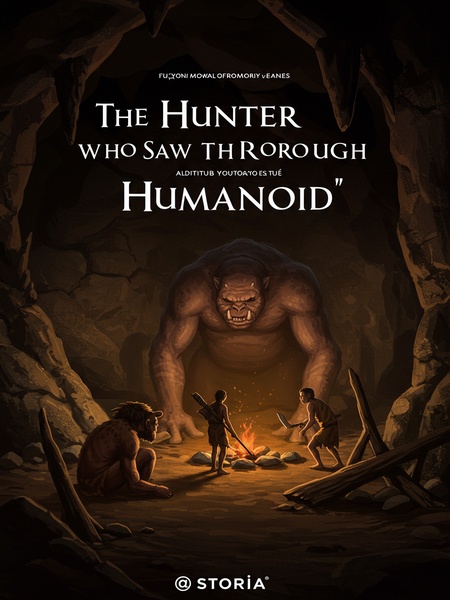Chapter 5: No Two Alike
5
That’s where Rachel’s story ended. Still no answer. Was the face in the cave the humanoid? Was it the guest, the leader—or both?
I stared at the blinking cursor, hungry for one more line.
What was the humanoid’s flaw?
It gnawed at me. I paced my room, piecing it together like a midnight detective.
Frustrated, I pulled on my hoodie and went to the study. I grabbed the uncanny valley book, flipping pages as I thought.
The theories were all graphs and jargon—nothing about that gut-deep unease.
I’d seen uncanny valley videos before—robots, dolls, creepy filters. But those flaws are obvious. Rachel’s story went deeper.
In her story, humanoids look exactly like humans. That was the problem.
My cousin wasn’t one to miss the point. She wanted something more subtle.
"If humanoids look just like us, aren’t they just human?"
I grumbled. Rachel’s story was a riddle—how could anyone guess it?
I talked to the ceiling. No answer.
But that only made me more curious. This was the kind of mystery I loved—the one that hides under your bed.
"There are no two identical leaves in the world." There had to be some difference.
I muttered the old proverb. Maybe that was a clue.
I made up my mind: before Rachel finished her story, I’d solve the riddle. See if I could outsmart her for once.
I flexed my fingers, imagining her face when I beat her to it.
I grabbed a set of nesting dolls off the shelf—a Seattle souvenir. I lined them up on the desk.
The biggest one’s paint was chipped. I set two similar dolls side by side, examining their painted faces.
Suppose these dolls—one’s human, one’s humanoid. They look the same, so where’s the flaw?
I scrutinized every line, every painted lash. Nothing stood out.
I even sniffed them—plastic and old paint, nothing more.
Their smiles looked like they were mocking me.
"Laugh it up," I muttered.
Annoyed, I tossed them aside. The smallest rolled under the bookshelf. I didn’t bother to fish it out.
"A hunter from a million years ago could spot the flaw. It can’t be that hard. I refuse to believe I can’t see it."
I slumped over the desk, staring at the ceiling fan. I had to be missing something.
Wait.
My mind snagged on a detail, like a fishhook catching a thread.
If the hunter could spot the flaw twice, it had to be visible—somehow.
Maybe it was in the way the stranger moved, or smiled, or spoke...
I grabbed my phone and reread Rachel’s story, searching for a hidden clue.
There: the hunter recognized the humanoid for the first time in a dream.
My heart skipped. In a dream? Faces in dreams are usually blurry. Even if they’re clear, they’re never as distinct as real life.
Besides, the hunter and the humanoid had never met before—no memory to match.
So how could he recognize the flaw? Unless…
"That’s it. That’s suspicious," I said out loud.
I sat up, adrenaline buzzing.
It means the hunter didn’t spot the flaw by sight, but by intuition—deduction.
Sometimes you just know when someone’s off, even if you can’t say why.
When the hunter met the leader, he saw the flaw right away—enough to scare him to death.
Maybe I was wrong. The flaw wasn’t appearance.
I tapped my pen, grinning. "It’s something deeper."
I nodded, satisfied. The secret’s not on the surface. The answer’s buried.
I read the story again, jotting notes.
I made a list:
First: Humanoids and humans look identical. The flaw isn’t visible.
Second: The humanoid said even heaven doesn’t know it exists. That means two things: it’s either from outside the universe, or it’s native but hidden from all life.
Third: The mountain lion didn’t smell humans in the cave. Maybe humanoids don’t have human scent. Just a theory.
I read the list again, chewing my pen. It almost fit.
Continue the story in our mobile app.
Seamless progress sync · Free reading · Offline chapters